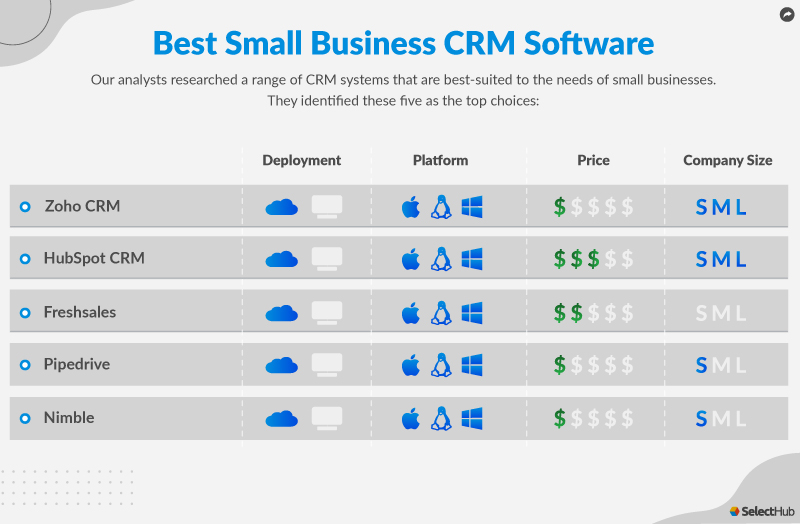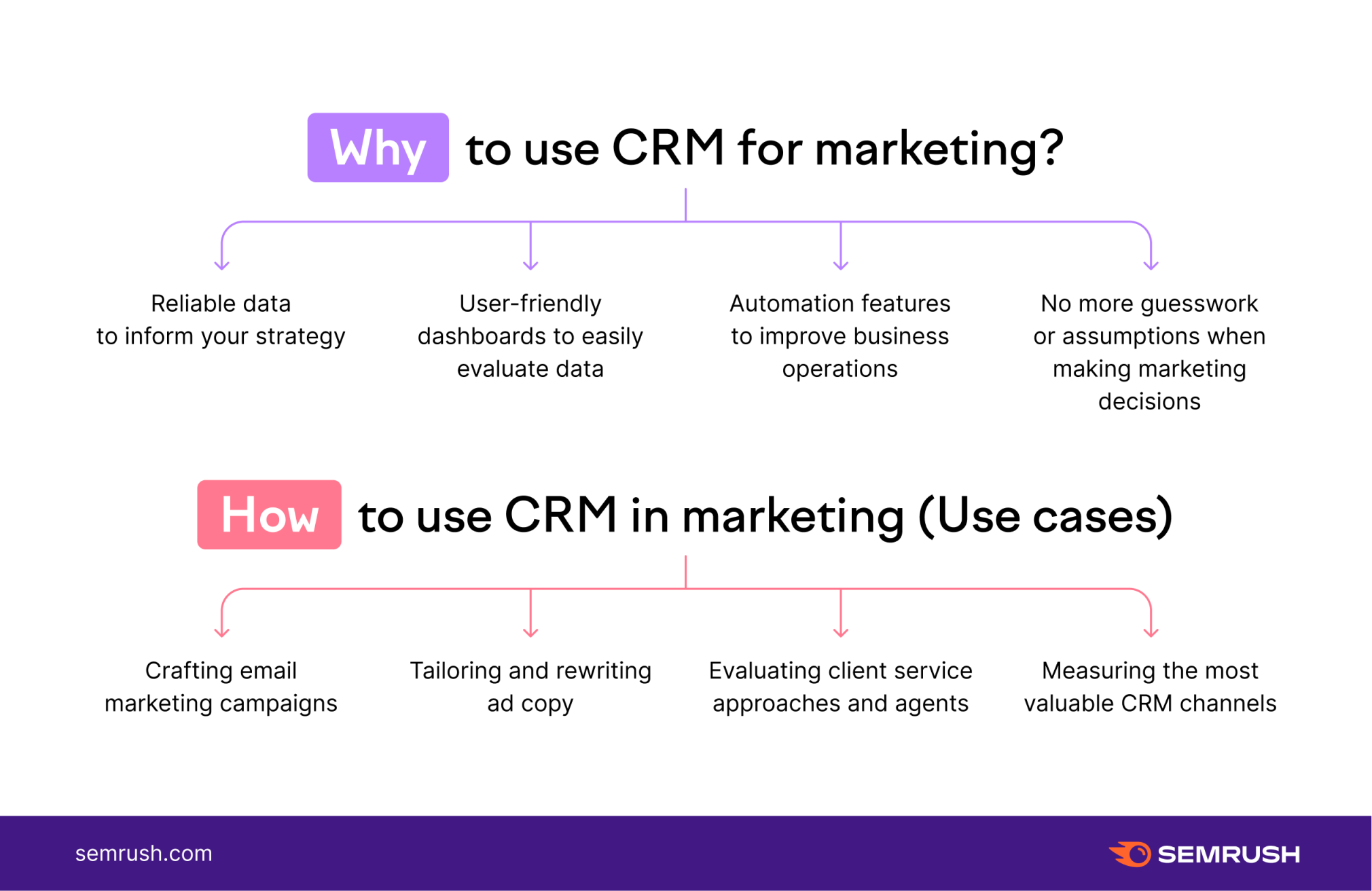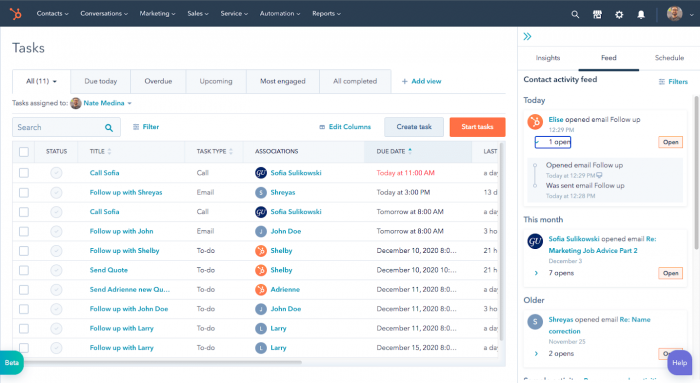Supercharge Your Product Strategy: Seamless CRM Integration with Aha!
In the dynamic world of product development, staying ahead of the curve requires more than just brilliant ideas. It demands a deep understanding of your customers, their needs, and how your product aligns with their expectations. This is where the power of integration comes into play, specifically the seamless fusion of your Customer Relationship Management (CRM) system with Aha!, a leading product development software. This article dives deep into the transformative potential of CRM integration with Aha!, exploring the benefits, implementation strategies, and real-world examples that can revolutionize your product strategy.
Why Integrate CRM with Aha!? The Power of a Unified View
Imagine a world where your product roadmap is not just a list of features, but a direct reflection of your customer’s voice. Where every customer interaction, every feedback submission, and every sales insight contributes to the evolution of your product. This is the promise of integrating your CRM with Aha!. It’s about breaking down silos and creating a unified view of your customer, allowing you to make data-driven decisions that resonate with your target audience. Let’s explore the core advantages:
1. Customer-Centric Product Development
The most significant advantage is the shift towards customer-centricity. By connecting your CRM (e.g., Salesforce, HubSpot, Zendesk) with Aha!, you gain unprecedented access to customer data within your product development workflow. This includes:
- Understanding Customer Needs: Sales and support teams gather invaluable insights into customer pain points, feature requests, and overall product satisfaction. This information, when integrated with Aha!, informs your product roadmap, ensuring that you’re building the right features at the right time.
- Prioritization Based on Impact: You can prioritize features based on the number of customers impacted, their revenue potential, and the strategic alignment with your product vision. This prevents the development of features that might seem appealing but have limited impact on your business goals.
- Improved Customer Satisfaction: Addressing customer feedback and incorporating their suggestions demonstrates that you value their input. This can lead to increased customer satisfaction, loyalty, and positive word-of-mouth referrals.
2. Enhanced Collaboration and Alignment
Product development is a team sport. Integrating your CRM with Aha! fosters better collaboration and alignment between different departments, including product, sales, marketing, and customer support. This leads to:
- Shared Understanding: Everyone has access to the same customer data, which minimizes misunderstandings and ensures that everyone is working towards the same goals.
- Streamlined Communication: With data flowing seamlessly between systems, teams can communicate more effectively, reducing the need for manual data transfers and lengthy email chains.
- Faster Time-to-Market: By having a clear understanding of customer needs and streamlined communication, you can accelerate the product development lifecycle and bring new features to market faster.
3. Data-Driven Decision Making
Gone are the days of making product decisions based on gut feelings. CRM integration with Aha! empowers you to make data-driven decisions based on real customer insights. This includes:
- Identifying Trends and Patterns: Analyze customer data to identify emerging trends and patterns that can inform your product strategy.
- Measuring the Impact of Features: Track the impact of new features on customer satisfaction, retention, and revenue. This helps you assess the value of your product investments.
- Optimizing Product Performance: Use data to identify areas where your product can be improved to enhance its performance and meet customer expectations.
4. Increased Efficiency and Productivity
Integration streamlines workflows and automates tasks, leading to increased efficiency and productivity. This translates to:
- Reduced Manual Data Entry: Eliminate the need to manually enter data into multiple systems. Data flows automatically between your CRM and Aha!.
- Automated Reporting: Generate reports automatically based on customer data and product development progress, saving time and resources.
- Improved Resource Allocation: Make informed decisions about resource allocation based on data-driven insights, ensuring that you’re investing in the right areas.
Implementing CRM Integration with Aha!: A Step-by-Step Guide
The process of integrating your CRM with Aha! can seem daunting, but with a well-defined plan, it can be a smooth and rewarding experience. Here’s a step-by-step guide to help you navigate the implementation process:
1. Define Your Objectives and Goals
Before you start, define your specific objectives and goals for integrating your CRM with Aha!. What do you hope to achieve? Are you aiming to improve customer satisfaction, streamline communication, or make data-driven decisions? Having clear goals will guide your implementation process and help you measure its success.
2. Choose the Right Integration Method
Aha! offers several integration options, including:
- Native Integrations: Aha! provides native integrations with popular CRM platforms like Salesforce and HubSpot. These integrations are often the easiest to set up and maintain.
- API Integration: For more advanced customization, you can use the Aha! API to build custom integrations with your CRM. This gives you more control over the data that is shared between the systems.
- Third-Party Integration Tools: Several third-party integration tools, such as Zapier and Workato, can connect Aha! with a wide range of CRM platforms. These tools offer a user-friendly interface and pre-built integrations.
Choose the integration method that best suits your needs and technical expertise.
3. Configure the Integration
Once you’ve chosen your integration method, follow the instructions provided by Aha! or the integration tool to configure the connection between your CRM and Aha!. This typically involves:
- Authenticating Your Accounts: Provide the necessary credentials to connect your Aha! and CRM accounts.
- Mapping Data Fields: Define which data fields from your CRM will be synced with Aha!. For example, you might map customer names, email addresses, and company information.
- Setting Up Triggers and Actions: Configure triggers and actions to automate data transfer between the systems. For example, you might trigger an action to create a new feature request in Aha! when a customer submits a support ticket in your CRM.
4. Test the Integration
Before you launch the integration, thoroughly test it to ensure that data is flowing correctly between your CRM and Aha!. Create test records in both systems and verify that the data is synced as expected. This will help you identify and resolve any issues before they impact your users.
5. Train Your Team
Once the integration is live, train your team on how to use the new system. Explain how to access and interpret the integrated data, and provide guidance on how to use the information to make informed decisions. This will ensure that your team can fully leverage the benefits of the integration.
6. Monitor and Optimize
After the integration is live, monitor its performance and make adjustments as needed. Keep an eye on data accuracy, data transfer speeds, and user feedback. Continuously optimize the integration to ensure that it’s meeting your needs and providing the desired results.
Real-World Examples: CRM Integration in Action with Aha!
Let’s explore some real-world examples of how companies are leveraging CRM integration with Aha! to transform their product development processes:
1. Salesforce Integration for Customer Feedback
A software company uses Salesforce to manage its customer relationships and Aha! to manage its product roadmap. By integrating the two systems, the company can automatically pull customer feedback from Salesforce into Aha!. When a customer submits a support ticket or provides feedback through a sales call, the information is automatically added as a feature request in Aha!. The product team can then prioritize these requests based on customer impact, revenue potential, and strategic alignment, resulting in a product that is more responsive to customer needs.
2. HubSpot Integration for Lead Scoring and Prioritization
A marketing automation company uses HubSpot to manage its leads and Aha! to manage its product roadmap. By integrating the two systems, the company can leverage lead scoring data from HubSpot to prioritize feature requests in Aha!. For example, if a high-value lead requests a specific feature, the product team can prioritize that request and allocate resources to its development. This helps the company focus its product development efforts on features that are most likely to drive revenue and customer acquisition.
3. Zendesk Integration for Support Ticket Analysis
An e-commerce company uses Zendesk to manage its customer support tickets and Aha! to manage its product roadmap. By integrating the two systems, the company can analyze support ticket data to identify common customer pain points and feature requests. The product team can then use this information to prioritize features that address these pain points and improve the overall customer experience. This leads to reduced support ticket volume and increased customer satisfaction.
Best Practices for Successful CRM Integration with Aha!
To maximize the benefits of CRM integration with Aha!, consider these best practices:
- Start Small: Begin with a limited scope and gradually expand the integration as you gain experience.
- Clean Your Data: Ensure that your data in both systems is accurate and up-to-date before you start the integration.
- Involve Stakeholders: Involve stakeholders from all relevant departments in the implementation process.
- Document the Process: Document the integration process, including the configuration steps, data mappings, and any custom code.
- Provide Ongoing Training: Provide ongoing training to your team to ensure that they are using the integrated system effectively.
- Regularly Review and Optimize: Regularly review the integration to ensure that it is meeting your needs and providing the desired results. Make adjustments as needed.
Troubleshooting Common Issues
Even with the best planning, you might encounter some issues during the integration process. Here are some common problems and how to address them:
1. Data Synchronization Errors
Data synchronization errors can occur if there are conflicts between the data in your CRM and Aha!. To troubleshoot these errors, check the following:
- Data Mapping: Verify that the data fields are mapped correctly between the two systems.
- Data Formatting: Ensure that the data formats are consistent between the two systems.
- API Limits: Be aware of any API limits that might be affecting data synchronization.
2. Performance Issues
Performance issues can occur if the integration is not optimized. To improve performance, consider the following:
- Data Volume: Reduce the volume of data that is being synced.
- Synchronization Frequency: Adjust the synchronization frequency to optimize performance.
- API Calls: Optimize your API calls to reduce the load on the systems.
3. Security Concerns
Security is a critical aspect of any integration. To address security concerns, consider the following:
- Authentication: Use secure authentication methods to protect your data.
- Access Control: Implement access control measures to restrict access to sensitive data.
- Data Encryption: Encrypt data in transit and at rest to protect it from unauthorized access.
The Future of Product Development: Embracing Integration
The integration of CRM with product development tools like Aha! is not just a trend; it’s the future of product development. As businesses become increasingly customer-centric, the need for seamless data flow and collaboration between departments will only grow. By embracing integration, you can:
- Gain a Competitive Advantage: Deliver products that are better aligned with customer needs and market demands.
- Improve Customer Loyalty: Build stronger relationships with your customers by demonstrating that you value their feedback.
- Drive Innovation: Foster a culture of innovation by empowering your team to make data-driven decisions.
- Increase Business Agility: Respond quickly to market changes and customer feedback.
In conclusion, integrating your CRM with Aha! is a strategic investment that can yield significant benefits for your product development efforts. By following the steps outlined in this article and embracing the best practices, you can unlock the power of a unified view of your customer, improve collaboration, make data-driven decisions, and ultimately, build better products that delight your customers and drive business success. Don’t wait; start exploring the possibilities of CRM integration with Aha! today and transform the way you build products.


